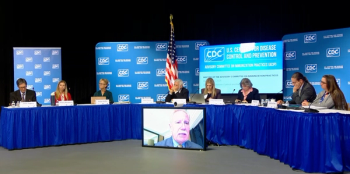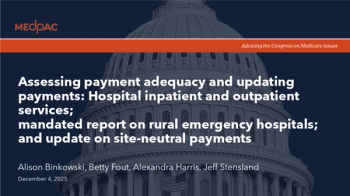
Hospitalists, PCPs bad at communication and its hurting patient care
The American health care delivery system is reaching a point of crisis.
Editor's Note:
The
Costs are escalating as outcomes and quality of care are diminishing. Our healthcare focuses on crisis management and treating problems aggressively with medicines and interventions of uncertain benefit, while neglecting true health and wellness.
More from Dr. Schimpff:
It is estimated that $
We wish to focus on one glaring problem occurring in hospitals that is relatively easy to fix and whose resolution could improve outcomes. Currently, as many hospitals close their doors to primary care physicians (PCPs) and instead rely on hospitalists, there often is a lack of communication between these doctors that can lead directly to costly mistreatment.
A true and common story will set the stage.
Mrs. P suffers from dementia and lives in a nursing home. One day, she became unresponsive. The nurse on duty could find no obvious reason and so immediately called 911 and sent her to the hospital. While she quickly woke up, the emergency medicine physician admitted her for further evaluation. Her assigned hospitalist found bacteria in the urine and treated her for a urinary tract infection, calling in an infectious disease consultation and starting her on a potent intravenous antibiotic. He also requested consultations from a cardiologist and a neurologist to determine the cause of her unresponsiveness, and they ordered further tests including an MRI and an echocardiogram. Mrs. P became more confused, was exposed to aggressive evaluation and treatment, and was losing her strength as a result of bed confinement. She was ultimately sent back to her facility after tens of thousands of dollars of medical care, worse off than when she arrived. She was fortunate to have not suffered further harm from her hospital-induced delirium and the potent medicines she received.
Hot topic:
Let’s dissect what happened and why.
The emergency medicine physician was faced with a lethargic person who could not give a coherent history, hence she was subjected to an extensive work-up and then admitted to the hospital. The hospitalist, likewise, was faced with a patient he had never met before, with only the emergency room records as guidance. He detected neurologic, infectious and cardiac problems, and so called for specialist consultations and extensive testing.
It is unfortunate that the nursing home nurse did not call the patient’s primary care physician upon transfer, but it was even more unfortunate that her PCP was not contacted at any time during her emergency room stay or subsequent hospitalization by any of the doctors who saw her. Had they called Mrs. P’s PCP, they would have learned that she had a long history of progressive dementia and similar unresponsive episodes in the past that had been fully evaluated. Further, they would have learned that she always carried bacteria in her urine without tissue invasion and that she could have received any of her treatments in the nursing home where she would have been safer and more comfortable, at a far lower cost. A
Trending:
The growth of the
The hospitalist is experienced in managing the types of medical issues that lead to hospitalization and works full time in the hospital. As a result, they come to know how to “get things done” and potentially can give more efficient care. But they are far too often burdened with large numbers of patients, and often know very little about the patients they are treating. With too many patients to care for and too little information, they tend to request consultations for problems that, given adequate time, they could have managed. This is especially problematic if the patient has multiple medical issues and is elderly.
Popular online:
PCPs have been generally content to allow the hospitalist to manage their patients; indeed it has been a major advantage for many. PCPs have seen their overhead costs rise dramatically, necessitating
In this situation, both PCPs and hospitalists could have improved Mrs. P’s care substantially, and reduced the cost of unnecessary care, simply by communicating. A call or text by the hospitalist to the PCP upon admission and at various decision points might have enabled Mrs. P to leave the hospital before any consults were called, before extraneous tests were ordered, before antibiotics were initiated and before she became more confused and weaker. More than half of elderly patients leave the hospital
Further reading:
A recent
In the end, there is nothing that trumps good physician-to-physician communication. It must be incumbent on hospitalists to involve PCPs during in-patient stays and it must be incumbent on PCPs to respond to hospitalists and provide crucial insight and information when asked to do so. Not only can outcomes be improved, but costs can drop and patients and their families can feel more comfortable knowing that their own doctor is involved in their care. If necessary, hospitals should set policy that makes hospitalist to PCP communication mandatory; everyone will benefit. Very basic solutions can frequently lead to profound improvement.
Andy Lazris, MD, CMD, is a primary care physician whose private practice focuses on geriatric patients, especially those residing in long-term care and assisted-living facilities. He is the author of
Stephen C Schimpff, MD, is a quasi-retired internist, professor of medicine and public policy, former CEO of the University of Maryland Medical Center, scientific adviser to Sanovas, senior adviser to Sage Growth Partners and is the author of
Newsletter
Stay informed and empowered with Medical Economics enewsletter, delivering expert insights, financial strategies, practice management tips and technology trends — tailored for today’s physicians.
















